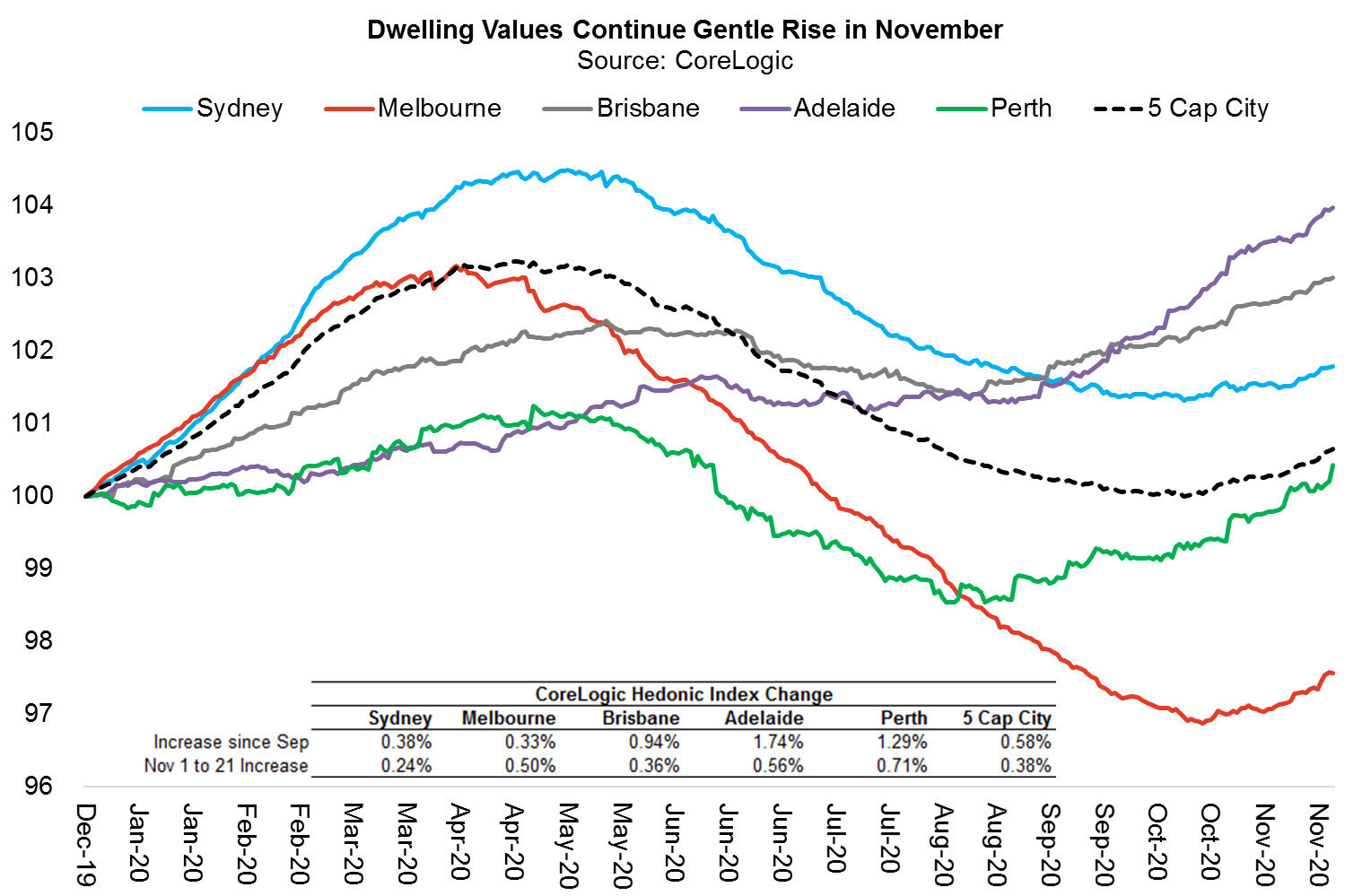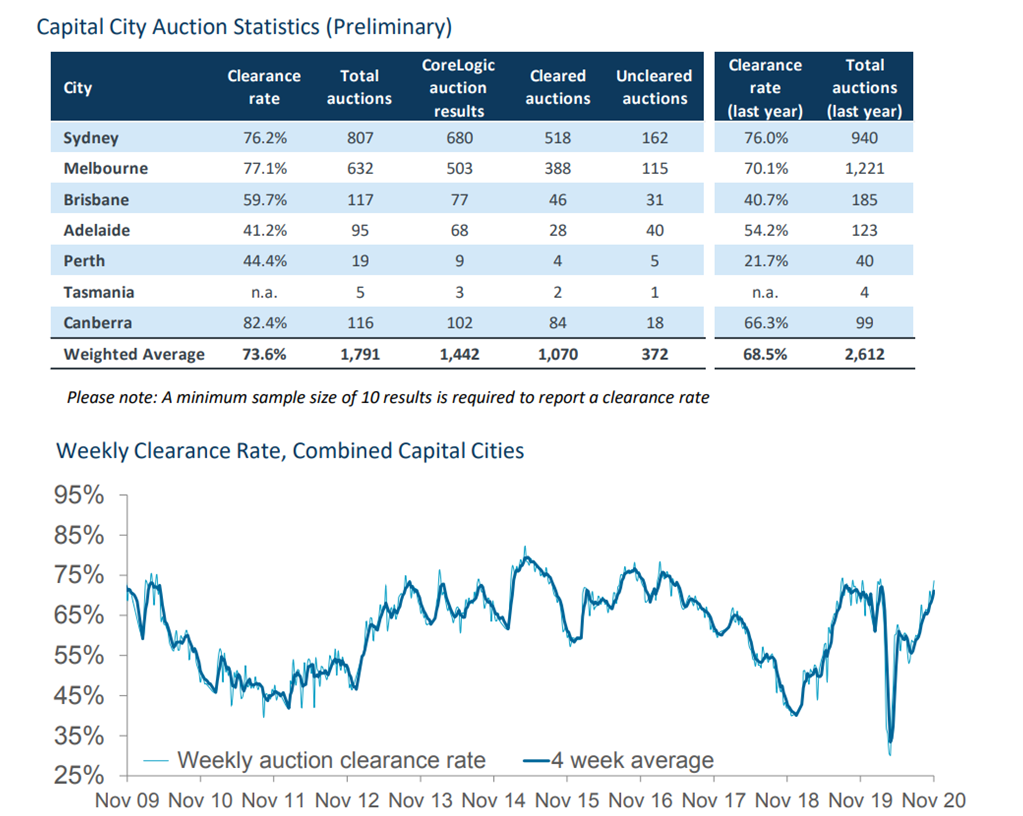House prices rise again in November after October gains
Further to our little note about the extinction of housing bears as a species, Australian dwelling values have continued to climb higher in the month of November to date. Over the first 21 days of the month, house prices---technically dwelling values (ie, including both apartments and houses)---across the five largest capital cities have appreciated 0.4% led by Perth (0.7%), Adelaide (0.6%), Melbourne (0.5%), Brisbane (0.4%) and Sydney (0.2%) according to the latest daily hedonic index data from CoreLogic.*

After prices started drifting lower in late April and May (with a tiny peak-to-trough correction of 2.8% in metro markets and 1.7% across all metro and non-metro regions), the Aussie housing rebound commenced in September in six of the eight capital cities. The bounce-back picked up steam in October with all cities except Melbourne realising gains.
The locked-down Melbourne market, which unsurprisingly fared worst during this episode, appeared to trough in late October and started generating clear price increases at the end of that month. In the November month-to-date, Melbourne has outpaced Sydney in terms of its capital gains. This also reconciles with increasingly robust auction market results, with the preliminary clearance rate in Melbourne for the weekend of November 21 hitting a very strong 77% based on 503 auctions captured by CoreLogic (see table below).
Although there is no evidence of a real boom yet---the recovery thus far has been gradual---Coolabah has since March 2020 forecast strong dwelling price appreciation following a modest six-month correction, with total capital gains of at least 10% to 20% expected over the next few years. Put differently, we do think that a sustainable housing boom will emerge over time. When prices were still drifting lower back in April 2019 we projected that a boom would emerge after the RBA cut rates, which is what we got with house prices increasing by about 10% (care of multiple RBA rate cuts) over the next year prior to the temporary COVID-19-induced interruption. On our figuring, we are still owed at least another 10% to 20% worth of price appreciation. The boom should really grip once property investors flood back into the market in 2021 to capitalise on the advent of "positive gearing" (ie, where gross rental yields are above the cost of servicing mortgage debt).
Since bank credit standards are arguably the toughest they have ever been, we are not concerned about bubbles or financial stability risks at this juncture. One area to watch, however, will be the relatively unregulated non-bank market, which will try to compete with banks through offering borrowers much looser terms and conditions. One potential mitigant will be APRA, which does have the ability regulate non-banks if they present a threat to financial stability.
The Australian housing market is highly seasonal and typically slows-down sharply over December and January. We expect this to manifest in the form of lower clearance rates and slower price growth as we put 2020 behind us.

*Note that CoreLogic does not publish daily index data for non-metro "regional" markets, which is only released on a monthly basis. These regions have, however, outperformed metro markets during the COVID-19 shock.
Not already a Livewire member? Sign up today to get free access to investment ideas and strategies from Australia’s leading investors.
Enjoy this wire? Hit the like button to let us know.
2 topics

